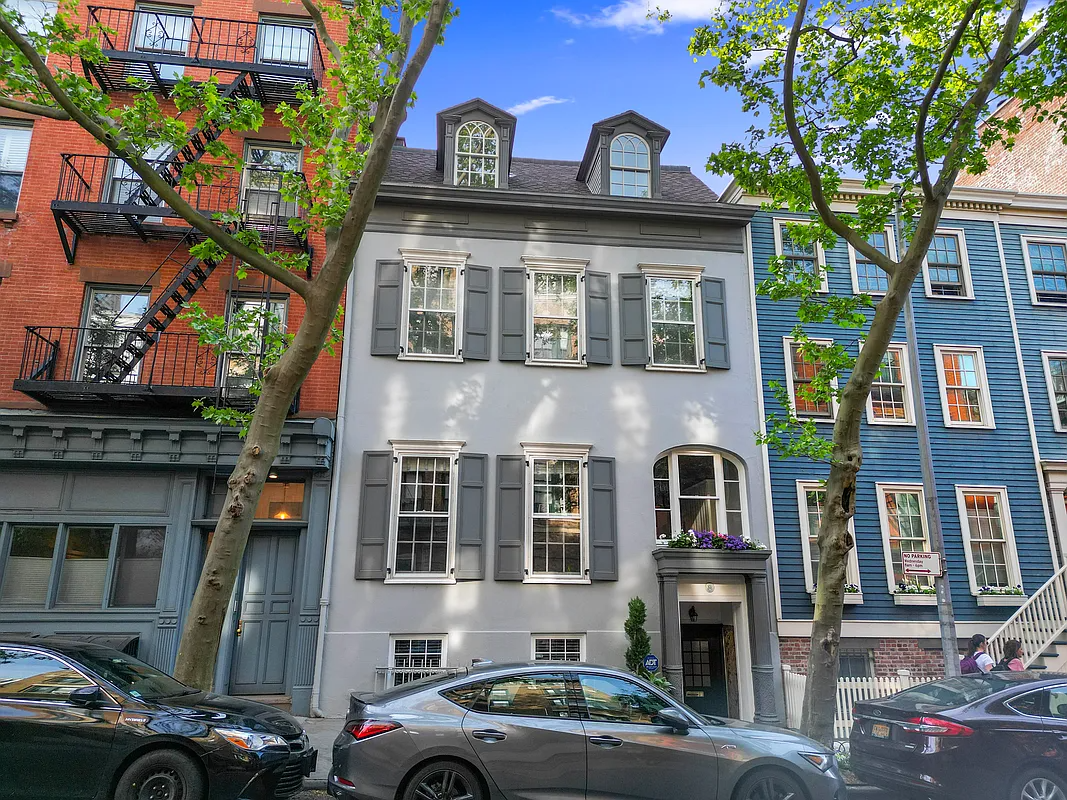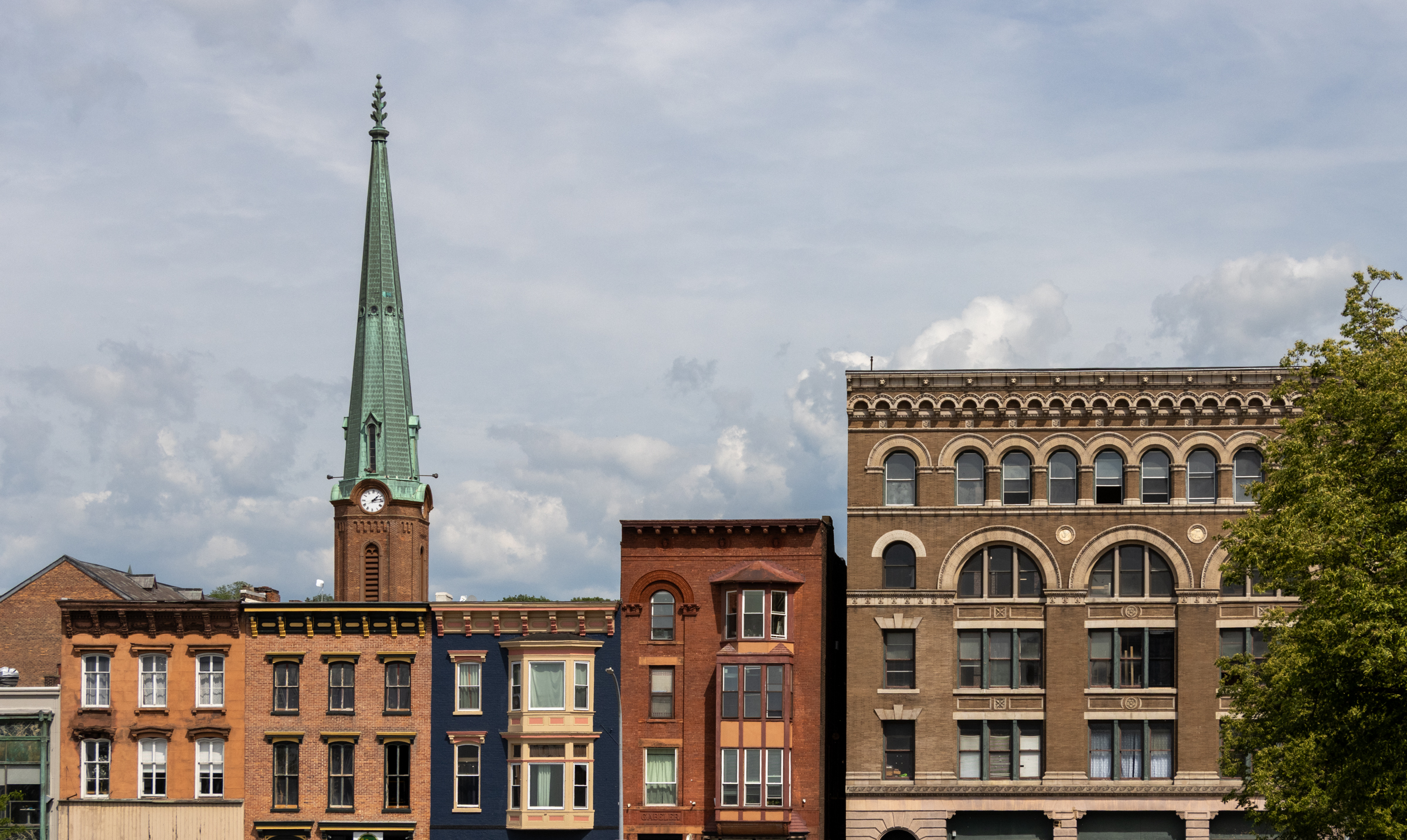President Street in All Its Glory
We realize that we’re not going to please everyone all the time, but we are constantly surprised at how quick some readers are to confuse our opinion about a house being overpriced with a negative attitude towards a specific neighborhood. When we have thought a house in Bed Stuy was overpriced in the past, we’ve…
We realize that we’re not going to please everyone all the time, but we are constantly surprised at how quick some readers are to confuse our opinion about a house being overpriced with a negative attitude towards a specific neighborhood. When we have thought a house in Bed Stuy was overpriced in the past, we’ve been accused of “hatin’ the Stuy”, which just isn’t true. We happen to think it’s one of the most architecturally rich nabes in the entire city. Same goes for yesterday’s post on the President Street house in Crown Heights. It’s got a nice exterior but what looked like a subpar renovation, so $1.4 million just sounded like a whole lot of beans to us. Also, the fact that Crown Heights properties tend to command less per square foot than some other brownstone areas is just an empirical fact, not some random opinion of ours. One of our readers who leapt to the nabe’s defense took it upon himself to snap some photos of the block of President Street in question and emailed them over this morning. (Thanks, Hal!)They do a nice job of contextualizing yesterday’s post and providing visual back-up for the many comments that said what a grand street it is. Grand indeed. We’re lovin’, not hatin’, people.
Crazy in Crown Heights [Brownstoner]





Talking about President street it was once a street that was gated in; if u wanted to drive through they had to open up the gate!
Those who are interested in the effort to see a Crown Heights Historic District are invited to peruse the website: http://www.crownheightsnorth.org
There is a general meeting on Wed. Dec. 21 at St.Gregory’s (Sterling Pl & Brooklyn Ave) @7:00 PM. All are welcome.
Yes, landmarking a neighborhood does present home owners with additional responsibilities and financial burdens. I feel sorry for those who cannot meet them and feel pressured to leave. However, there is at present no other way to preserve the historical character of many neighborhoods in NYC that are currently under threat. And yes, I do believe that Crown Heights has an architecturally significant housing stock that, collectively, deserves to be protected. This is true for several neighborhoods in NYC that currently are not protected by landmark status.
I suppose you can have faith that your neighbors won’t tear down their architecturally significant homes or make other unalterable renovations to the exterior, but good luck. More and more “McMansions” are springing up throughout Brooklyn, and developers are devouring every potential lot. Been down to Manhattan Beach lately? Currently, there is no other way to prevent the atrocities that are rising up throughout our city than thorugh Landmarking. There is no provision in the law that demands an owner preserve the “overall” character of historic homes (i.e., can’t brick up the front of your house, enclose your porch, cement over your front lawn to make a parking spot, generally alter the original line or form of the home), while still allowing the owner to make some modifications, which although not historically accurate, do not go so far as to denigrate the home.
That said, preservation is gaining steam throughout the United States. People are removing siding, replacing nasty vinyl windows, rebuilding their front porches. I see it around me everyday. Grants and loans for this sort of work are available only to those living in Landmark Preservation areas, as are significant tax deductions.
Landmarking is a heated subject. The options are polorized. You have to come down on one side or the other. People love their inflated property values, but how long will they last if the view from the front parlor is that of twelve Fedders air conditioning vents?
As far as “pretty houses” are concerned: attractive, well-maintained period homes engender pride in a neighborhood, in its history, its architectural heritage.
Brooklyn is in danger of becoming a cement garden, a ghost of its once magnificent self. I’m not about to sit back and let that happen without a fight.
A good comparison point is Carroll Gardens which as been solidly middle class and not landmarked, for the most part, for decades. Many facades have lost their ironwork and details when people repaired them. Ft. Greene and Clinton Hill became very poor areas for a number of decades, during which time people left the facades alone, often for lack of funds, then most of the area was landmarked. As a result, you have many beautiful buildings that were not ruined and are now being restored (or have recently been restored).
I’m not missing the point Shahn, that’s exactly what I was saying when I said that fixing the windows etc. would have to be done within the LPC guidelines if landmarked, just that it is not a retroactive policy the forces people to repair nand restore. I know it can be tough, I’ve owned landmarked property, but I personally like the idea of these places being preserved. Also, I’m not sure what sort of cheap repairs could be made to a facade of a brownstone without ruining it. Part of the reason Fort Greene and Clinton Hill have a lot of intact housing stock to repair is because it was landmarked thus preventing people from doing maintenance work that would ruin the external details.
You are missing one critial point, Anon 3:30. When an area is landmarked, renovations within LPC guidelines do not have to be made to bring the buildings up to code, but ALL future repairs or upgrades will have to be within Landmarks’ guidelines. If you want to put new windows in because your old vinyl ones are rotten, you can’t put aluminum or even new vinly, they have to be wood. While this does mean that developers can’t go around razing old buildings that are landmarked ( I wouldn’t have a house if LPC hadn’t denied the previous owners’ application to demolish it), the new regulations often put a strain on legacy owners when they need to make upgrades or repairs to their homes. On my old block in Fort Greene, I know of two older owners that decided to sell their buildings rather than spend $40,000 on new windows or $30,000 on a new brownstone facade.
Excellent point, Anon 3:30
When an area is landmarked, owners do not have to retroactively fix things to landmark standards (i.e. if you had vinal windows and your house or block was landmarked, you could leave those windows in, but if you wanted to fix or replace them, you would then have to go through the landmarks appoval process). So the cash “bonanza” to the LPC would not be immediate. The benefit to the owners in such a situation is that the value of the property would likely go up as potential buyers would not have to wrestle with the uncertainty of what could be torn down and built in its place. Houses in landmarked areas almost always command a premium over those in areas that are not landmarked. It is a big selling point for those in the market for these old homes.
Just because something is old, doesnt make it historical and just because something is pretty, doesnt make it historical either. The Landmarks Commission was created for a specific purpose. Many of you wish to twist the intentions of the LPC to suit your own ideals.
Those crying out that landmarking entire neighborhoods is the only recourse, really need to rethink their position. How many of the current houses in Crown Heights would pass a landmarks inspection. Vinyl siding… Violation. Vinyl windows… Violation. Shutters…. Violation. Improper fence… Violation. I could go on and on. The point that i’m trying to make is that Landmark designation would be a cash bonanza for the LPC. Do you really want to burden hard working middle class home owners with the whims and fancies of the LPC? Thats your only recourse? Give me a break.
You down zoning folks need to stop piggybacking off Landmarks. It’s a real double edge sword. Get your own movement…